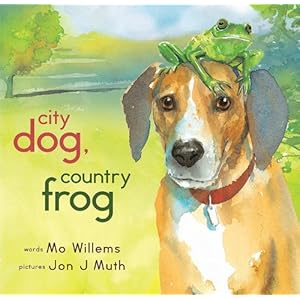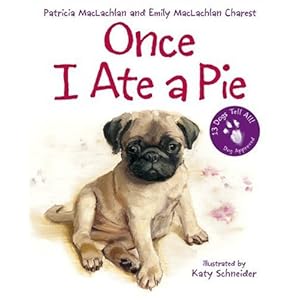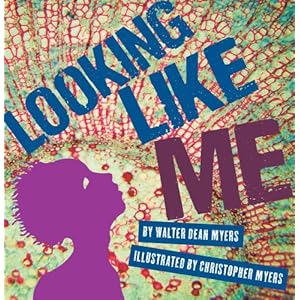Are your first or second grade writers passionately composing letters? Do you notice things that could use improvement but aren't sure what to do? I have a few tips for your partner time that can help you and your young writers compose powerful letters!
First, let's talk a little about partner time in writing workshop. You may want to partner kids in this unit who are writing on similar topics or perhaps kids who get caught up in similar causes and write several letters to different people on a topic. Or, you may want to partner each writer with another writer with whom they share a strong social connection. Kids are writing about topics near and dear to their hearts. Who better than to help you develop a strong reason or an anecdote than someone who knows you best? Give the kids time with the people who can help them most. I suggest 5 minutes in the middle of writing workshop as partner time to give kids a boost. This partner time will no doubt increase volume too.
Here are a few things to teach partners in this unit:
One partner pretends she is the audience for her partner. The writer rereads his letter and asks his partner, “Does my letter make sense? Do you understand what I am trying to change?”
One partner can read her letter and tell her partner the problem she is trying to solve with her persuasive letter. She can ask her partner for help developing reasons why the problem is important to change. The partner can listen to the problem and suggest some reasons.
One partner can read his letter and tell his partner the problem he is trying to solve with his persuasive letter. He can ask his partner for help developing some ways he could be part of the solution or change process.
Happy writing everyone!
Friday, January 21, 2011
Conferring in the Persuasive Review Writing Unit
Okay, so the units have begun in your classroom and now you have spent some time looking at the writing and teaching during the workshop. You are wondering how you might be able to support your writers further. Take a look at some of these "If... Then..." suggestions. Keep in mind that these are suggestions to guide you - not "musts," as we want to make sure we talk with writers first in a conference so we can determine their intention for their writing time before we deliver a teaching point.
A few possible ideas for conferring with writers
in the persuasive review-writing unit of study
| If you see or research a writer doing this… | Then, you might teach this… |
| A writer knows what she wants to write about but is not sure how to get started. | Start with the name of what you are reviewing and say how you feel about it (good or bad). |
| A writer who is started with a few sentences that show how she feels about the subject. But, she is not sure what else to add. | You can write your review by telling a bit of your story, “When I walked in I smelled…” or by telling the reader what she will experience, “When you walk in, you will smell…” or you can just state it, “The cupcake shop smells great. The smell of vanilla cake hits a visitor as soon as she opens the door.” |
| A writer wants to write some details but is struggling to find the exact language to describe the subject. | Leave yourself a note or give yourself the job of finding more information about your subject (if you need to look up a price, if you need to look up the name of the author or the name of the characters). OR Use your artifact (like a menu, book jacket, movie ticket, or video game instruction manual) to give you more information to add into your review. |
| A writer has told an opinion of the subject. | Add a list of reasons to support your opinion. You may use some of the same kids of reasons as the mentor authors. For example, food writers often write about the taste of the food, the atmosphere, and the service. You could try the same thing. AND/OR Reread your scratchpad to find some reasons why you liked or disliked your subject. |
| A writer has added some details but wants to write more. | Add a counter argument to your review. Take some time to think about what the other perspective might be and argue against it. You can add words like, “I don’t like this restaurant, but you might like it if you…” OR Add in some information that builds your credibility as a review of this subject. OR Add a caution, warning, or rating system to the end of your review. |
Wednesday, January 19, 2011
Persuasive Reviews
Are you and your second or third grade students embarking in a study of opinion writing via persuasive reviews? Movie, book, television, video game, food, and fashion reviews are useful pieces to write as well as read. Young writers relish in the opportunity to 'tell it like it is,' and convince others to try their favorite things.
I have a few tips to help you through this study. My colleagues and I have been investigating reviews for a few years and my colleagues at Horizon Elementary school in Sun Prairie, WI piloted many of the minilessons in Teaching Persuasive Writing K-2. Some of the resources from the book are in the links below.
One of the most important things you can do is write some reviews yourself and show them to your students in your minilessons. You can find some samples written by students as well as their teachers at this Units of Study Link. You'll see a food review of a pizza place as well as a book and movie review - all written by students. One teacher showed her students how book stories and libraries place book reviews near the shelves to help readers choose their next read. This prompted her class to end their review unit at a local library, publishing their book reviews so all the readers in the community could read and enjoy.
Several teachers who studied reviews and the writerly life of reviews with me found that it was helpful to bring in a local review writer, perhaps someone from the local newspaper or magazine, to talk with students about how review writers live and work. Here are some of the things we learned reading and interviewing reviewers that we passed along to the students.
I have a few tips to help you through this study. My colleagues and I have been investigating reviews for a few years and my colleagues at Horizon Elementary school in Sun Prairie, WI piloted many of the minilessons in Teaching Persuasive Writing K-2. Some of the resources from the book are in the links below.
One of the most important things you can do is write some reviews yourself and show them to your students in your minilessons. You can find some samples written by students as well as their teachers at this Units of Study Link. You'll see a food review of a pizza place as well as a book and movie review - all written by students. One teacher showed her students how book stories and libraries place book reviews near the shelves to help readers choose their next read. This prompted her class to end their review unit at a local library, publishing their book reviews so all the readers in the community could read and enjoy.
Several teachers who studied reviews and the writerly life of reviews with me found that it was helpful to bring in a local review writer, perhaps someone from the local newspaper or magazine, to talk with students about how review writers live and work. Here are some of the things we learned reading and interviewing reviewers that we passed along to the students.
· Reviewers look for things to review as they live their daily lives.
· Reviewers look at things with a critical eye.
· Reviewers are honest about important facts that they think the readers should know and then they decide if those facts are a positive or a negative.
· Reviewers need to carry their writing tools with them (scratchpad and pen).
· Food reviewers order more than one thing at a restaurant so they can try a few things.
· Food reviewers taste food slowly and ask themselves, “Does this taste good?”
· Reviewers read the reviews of other reviewers. And, they know what to look for in their subject when they do a similar kind of review. For example, food reviewers know to look for the ambiance, the taste of the food and the service. Movie reviewers know to pay attention to the plot and the acting.
· Reviewers know something about their subject before they review it. If you are struggling to think of a topic or subject to review, think of what you know best. Do you know video games? Do you love food?
· Reviewers can press pause in the middle of their meal, in the middle of the show, in the middle of the movie, etc. so they can jot things they notice or opinions they have.
· Reviewers keep a token or artifact of the subject (restaurant menu, movie ticket, playbill, video game guidebook).
Monday, January 10, 2011
Persuasive Letters
Hello Readers! The above banana was in the mailbox of North Street School's principal, Mr. Fereira on one of the days I was there to work with him and his amazing teachers. This young writer received messages from his own mom on bananas in his lunch and perhaps decided to persuade Mr. Fereira to eat more bananas. Interesting paper choice Little Love!
Are you in the midst of a persuasive writing unit in your first, second, or third grade classroom? You might be looking for some supports. I have a bunch of links to share with you that you can use in your classroom right away.
Each link comes from work with teachers like Andi, Sarah, Liz, Katherine, and more that were featured in my book, Teaching Persuasive Writing, K-2. Special thanks to all of these teachers!
And, special thanks to all of you for honoring your students' voices and giving them an opportunity to make their family, neighborhood, school, and community stronger through their words.
Supports You Can Use in Your Room
Demo Writing from Students
Many teachers like to show students a sample letter at the beginning of a unit to show them how they can make a difference. You may like the see Alexandra's letter, the principal's response to Alexandra's letter, and Niamh's letter. You can print each one out, and use them in minilessons and conferences to show kids what is possible in their own letters.
Your Own Demo Writing
You will want to do your own writing in front of students too. Here is a sample. Note the ways this teachers has highlighted for students the things she is doing as a writer to make her letter more persuasive.
A Newly Organized Writing Center
You may also want to create mail baskets to organize all of those letters! See the photo from Andi's writing center to see how she organized for delivery. You can also see how she organized extra supplies.
Here is another photo of Andi's writing center, labeled as the Post Office for this Unit.
Charts to Support Independence
Andi and I also used this chart in many minilessons to help kids craft powerful letters with supporting detail. It seems to match the common core standards for developing an opinion and then supporting that opinion with reasons.
Saturday, January 8, 2011
Book of the Month Suggestions
Are you looking for some new read alouds for your classroom? Perhaps you are searching for titles that you can give to all the teachers in your school as a school-wide book of the month project. I am an avid collector of children's picture books and happy to tell you about some of my favorite titles. I chose the following books because they do the following things:
Provide opportunities for whole class conversations on issues that matter to students.
Provide opportunities for conversation with young students as well as upper elementary students.
Provide opportunities to learn new vocabulary and read in a variety of genres.
Provide opportunities for community building and opportunities to build a positive school culture.
If you want to read more about school-wide read alouds, I recommend chapter three in A School Leader's Guide to Excellence by Carmen Farina and Laura Kotch.
On with the titles! Click on them to see links to purchase and to read a few reviews. My apologies in advance if this post makes your pocketbook a little lighter. They are all so good!
 |
Naked Mole Rat Gets Dressed  How to Heal a Broken Wing How to Heal a Broken Wing Animals Nobody Loves (Nonfiction) Animals Nobody Loves (Nonfiction) |
Once I Ate A Pie (Poetry)
Finally, if you love books as much as I do, you MUST get a membership to the Cooperative Children's Book Center. This non-lending children's book library is on the campus of the University of Wisconsin Madison. The librarians on staff (who have historically been members and/or chairs of the Caldecott and Newberry Award panels) read and read and read along with members like you and me to develop reading lists that teachers, parents, and librarians can use. Here is a link to their site that shares some of the elementary book lists. If you use the site, please consider joining me as a member.
Book Room Update
New photos have been added to the Book Room post! Go there to see some shots of the book room at OWNCS in Astoria, Queens.
And... if you are looking for some titles to refresh your baskets, I have some favorites. The following is a short list of some titles for character studies and book clubs that I have been sharing lately:
Make Way for Dyamonde Daniel is a great heroine for second and third grade chapter book readers. This is the first book in a great series by Nikki Grimes.

Welcome to the Bed and Biscuit is a lovely story of animal friendship involving a cast of characters that warm the hearts of young readers and provide some comic relief as well. This is the first chapter book in a series of adventures that emergent chapter book readers will enjoy.

The Magician's Elephant is a beautiful story of magic and hope for 3rd - 5th grade students. It would make a great book club selection or read aloud to prepare students to have strong book talks.
And... if you are looking for some titles to refresh your baskets, I have some favorites. The following is a short list of some titles for character studies and book clubs that I have been sharing lately:
Make Way for Dyamonde Daniel is a great heroine for second and third grade chapter book readers. This is the first book in a great series by Nikki Grimes.

Welcome to the Bed and Biscuit is a lovely story of animal friendship involving a cast of characters that warm the hearts of young readers and provide some comic relief as well. This is the first chapter book in a series of adventures that emergent chapter book readers will enjoy.

The Magician's Elephant is a beautiful story of magic and hope for 3rd - 5th grade students. It would make a great book club selection or read aloud to prepare students to have strong book talks.
 |
Subscribe to:
Comments (Atom)










